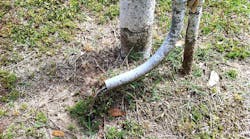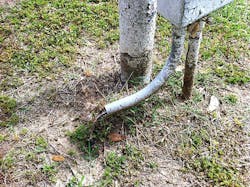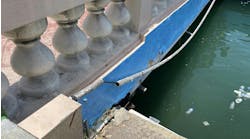How well do you know the Code? Think you can spot violations the original installer either ignored or couldn't identify? Here's your chance to moonlight as an electrical inspector and second-guess someone else's work from the safety of your living room or office. It's your turn to identify the violation.
Hint: A short-sighted sleeve
Find the Answer
The installer of this protective PVC sleeve came up a little short on his measurement. This sleeve must extend at least 24 in. into the earth to properly protect the UF cable and comply with the requirements of Sec. 300.5(D)(1) and meet the minimum cover requirements outlined in Table 300.5, Column 1.
The way in which this cable is exposed leaves it susceptible to being damaged from lawnmowers, weed trimmers, and any other activities in the area that may allow a person to step directly on this cable and pipe. A damaged energized cable could present a real shock hazard, especially if the ground was wet or if it was raining.
If using PVC for this type of protective sleeve, it would probably be better to use heavy wall Schedule 80 type PVC instead of Schedule 40 PVC. Section 352.12(C) prohibits using PVC in areas subject to physical damage unless it is identified for that use. The Informational Note in Sec. 352.10(F) indicates that Schedule 80 PVC is identified for this use.





